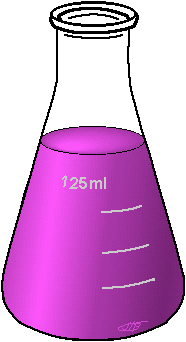What is a psychopath?
Let me start off by saying the terms psychopathy and sociopathy are non-clinical terms that are not defined within the DSM-IV. Without medically defined meanings, there really isn’t any ability to define differences in between the terms. In the UK, the tendency is away from the use of the term psychopathy to avoid confusion with ‘psychosis’ (symptom or feature of mental illness).[1] In the United States the move to replacing the term psychopathy with sociopathy was driven by change of thought on caused the condition (internal vs. external).[2]
The term psychopath comes to us via way of German researchers who in the 1880s used it to imply that the condition is from an “internal sickness.” In the mid-twentieth century came the new liberal social thought which sought to find external causes for social deviancy. The psychologist G. E. Partridge coined the term “sociopath,” in 1930 to reflect this change of view.[2] The recent use of fMRIs has swung views on the underlying cause of psychopathy back to an internal origin.
Thus the terms psychopathy and sociopathy describe the same condition but from different viewpoints.
The American Psychiatric Association’s "DSM-IV" refers to psychopathy, sociopathy, and dissocial personality disorder as synonyms for 301.7 Antisocial Personality Disorder. [3, page 702]
Again, without any primary medical definitions for these terms, it is the author’s call on how to use the terms to express his ideas.
Shortest Definition of a Psychopath
The shortest, simplest definition of a psychopath is
A psychopath is a person who is sane but amoral.
It is a character defect not a mental illness.
An Expanded Definition of a Psychopath

|
Hervey Cleckley, a American psychiatrist, in his 1941 groundbreaking book, “The Mask of Sanity,” describe the psychopath as someone who has only a very superficial sense of beauty/ugliness and only the most elementary understanding of the basic concepts of goodness, evil, love, horror, and humor.[4]
Cleckley says the psychopath functions by mimicking the normal behavior of those around him hiding “a grossly disabled and irresponsible personality.” He, psychopathy is rare in women, is “brilliant and charming” and talks “entertainingly” all the while carrying “disaster lightly in each hand.”
Hervey Cleckley’s “The Mask of Sanity,” (1941) is a must read for anyone wanting to or needing to have an understanding about psychopaths and how they function. The book describes the clinical interviews he had with incarcerated criminals. The book has been out of print for a number of years.
But a private printing for non-profit educational use is available as a free PDF download at The Cassiopaean Experiment or in the Scitechlab Library: The Mask of Sanity (with a fancy cover).
Dr. Robert D. Hare, professor emeritus at the University of British Columbia and creator of the Hare’s Psychopathy Checklist-Revised (PCL-R) has written two books for the general public on psychopathly — Without Conscience (1999) and Snakes in Suits: When Psychopaths Go to Work (2007).
In ‘Without Conscience,’ Prof. Hare describes psychopaths by saying “psychopaths are social predators who charm, manipulate, and ruthlessly plow their way through life, leaving a broad trail of broken hearts, shattered expectations, and empty wallets. Completely lacking in conscience and in feelings for other, they selfishly take what they want and do as they please, violating social norms and expectations without the slightest sense of guilt or regret.” [5, page xi]
Just pickup any newspaper and you will read about the “serial killers, rapists, thieves, swindlers, con men, wife beaters, white-collar criminals, hype-prone stock promoters and “boiler-room” operators, child abusers, gang members, disbarred lawyers, drug barons, professional gamblers, members of organized crime, doctors who’ve lost their licenses, terrorists, cult leaders, mercenaries, and unscrupulous businesspeople.”[5, page 3]
Psychopaths, even those who are “psychopathic killers, however, are not mad, according to accepted legal and psychiatric standards. Their acts result not from a deranged mind but from a cold, calculating rationality combined with a chilling inability to treat others as thinking, feeling human beings.” [5, page 5]
What happens when you Interact with Psychopaths
Prof. Hare emphasizes “on a more personal level, it is likely that at some time in your life you will come into painful contact with a psychopath. For your own physical, psychological, and financial well-being it is crucial that you know how to identify the psychopath, how to protect yourself and how to minimize the harm done to you.” [5, page xii]
Hare explains, “Everybody has met these people, been deceived and manipulated by them, and forced to live with or repair the damage they have wrought. [5, page 1]
He goes o to say that they use “their charm and chameleonlike abilities to cut a wide swath through society and leaving a wake of ruined lives behind them.” [5, page 2]
A 1992 FBI report reached the conclusion that almost half of the killers of law enforcement officers matched the profile for psychopathly. [times] At least two million psychopaths live in North America [5, page 2]
The Researcher’s Definition of Psychopathy: Hare’s Psychopathy Checklist-Revised (PCL-R)
 Robert D. Hare’s Psychopathy Checklist-Revised (PCL-R) isn’t available for public sale. |
Researchers do however use the term psychopathy. Clinically psychopathy doesn’t fall neatly into any particular DSM-IV disorder but could be considered, in this author’s opinion, as a ‘super disorder’ in that it contains components of multiple orders.
Under Robert D. Hare’s Psychopathy Checklist-Revised (PCL-R), psychopathy falls roughly over three DSM-IV Cluster B Personality disorders — antisocial personality disorder, histrionic personality disorder, and narcissistic personality disorder.[6]
Hare’s fundamental psycho-diagnostic tool list 20 traits that are measured on a scale of 0 to 2 to determine a diagnosis —
Factor1: “Aggressive narcissism”
- Glibness/superficial charm
- Grandiose sense of self-worth
- Pathological lying
- Cunning/manipulative
- Lack of remorse or guilt
- Shallow affect
- Callous/lack of empathy
- Failure to accept responsibility for own actions
- Promiscuous sexual behavior
Factor2: “Socially deviant lifestyle”
- Need for stimulation/proneness to boredom
- Parasitic lifestyle
- Poor behavioral control
- Lack of realistic, long-term goals
- Impulsivity
- Irresponsibility
- Juvenile delinquency
- Early behavior problems
- Revocation of conditional release
Traits not correlated with either factor
- Many short-term marital relationships
- Criminal versatility
The score is obtained from file information and a semi-structured interview. A score of 30 is needed for a research diagnosis of psychopathy. Incarcerated offenders have a mean score of about 22 while noncriminals typically score around 5.
Hare believes the DSM’s use of antisocial personality disorder as a catchall diagnosis that includes psychopathly is wrong.[2]
Hare said, “it’s like having pneumonia versus having a cold. They share some common symptoms, but one is much more virulent.”[2]
References
- No author; Madness or Badness; Mind in Manchester; Webpage; No date. Accessed December 2, 2008 @ http://www.mind-in-manchester.org.uk/campaigning/comscare/personality_order_madness_or_badness.php.
- Seabrook, John; Suffering Souls: The search for the roots of psychopathy, The New Yorker; Online; November 10, 2008. Accessed December 2, 2008 @ http://www.newyorker.com/reporting/2008/11/10/081110fa_fact_seabrook?currentPage=allhttp://www.newyorker.com/reporting/2008/11/10/081110fa_fact_seabrook?printable=true (print version).
- American Psychiatric Association Task Force on DSM-IV; Diagnostic and Statistical Manual of Mental Disorders: DSM-IV-TR; American Psychiatric Pub.; 2000.
- Cleckley, Hervey M.; The Mask of Sanity ~An attempt to reinterpret the so-called psychopathic personality; The C. V. Mosby company; St. Louis, Missouri, USA; 1941.
Available as a free non-profit educational PDF download at The Cassiopaean Experiment or with a fancy cover in the Scitechlab Library: The Mask of Sanity. - Hare, Robert D.; Without Conscience; The Guilford Press; NewYork; 1999.
- Hare, Robert D.; Manual for the Revised Psychopathy Checklist (2nd ed.); Multi-Health Systems, Toronto, Ontario, Canada; 2003.
- Hare, Robert D.; Psychopathy and Antisocial Personality Disorder: A Case of Diagnostic Confusion; Online; Psychiatric Times; Volume 13 No. 2; February 1, 1996. Accessed December 1, 2008 @ http://www.psychiatrictimes.com/display/article/10168/54831#.
- Hare, Robert D.; Snakes in Suits: When Psychopaths Go to Work; HarperCollins Publishers; New York, NY, USA; 2007.




























